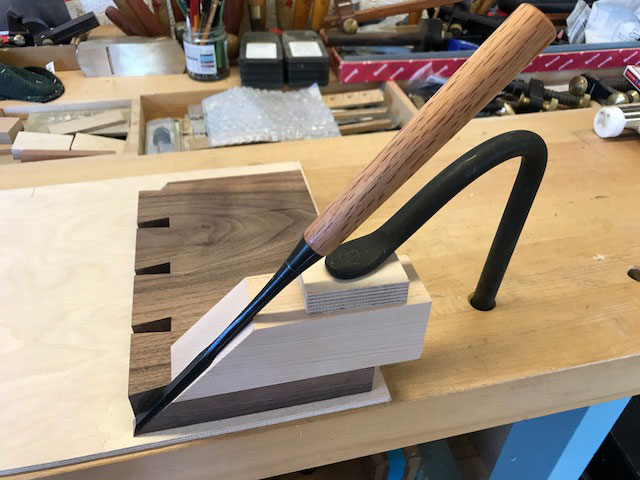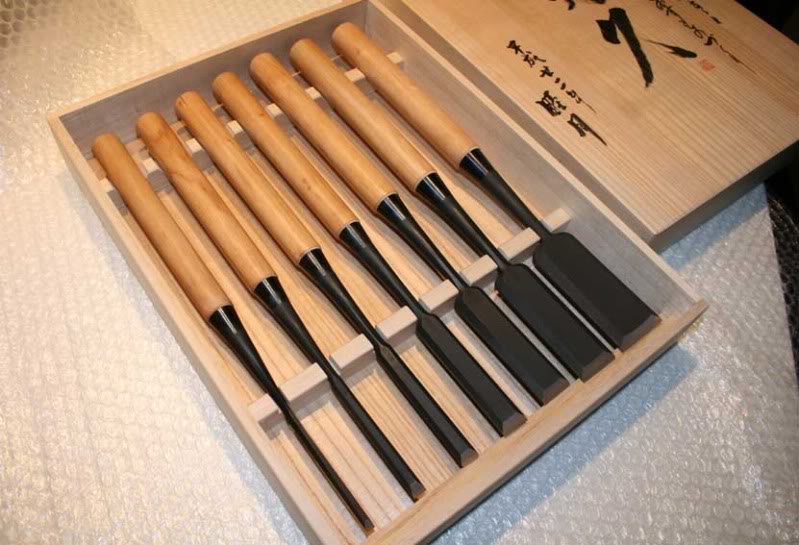Many woodworkers will need a long paring chisel at some time. Unless you're a pattern maker you won't need more than one or two, but sometimes that extra long blade is just what a job requires.
Personally I'll often use "paring blocks" ie pieces of scrap wood cut at a particular angle as an aid to cutting a very precise and repeatable angle with a chisel. I showed a practical application of this for cutting mitred dovetails in this WIP,
how-to-cut-mitred-or-mitre-dovetails-wip-t112467.html
In that WIP I used a Japanese paring chisel, but I also have a couple of western style paring chisels. A cranked one from Bristol Design and a normal style one from Henry Taylor.
The Bristol Design chisel required an awful lot of work to get the back acceptably flat. It now works well enough but I'll have more work to do in the future to keep it functional.
The Henry Taylor paring chisel also required some work to flatten the back, but it was about 20 or 30 minutes rather than several hours. The Henry Taylor tool is still manufactured, in both cranked and flat paring configurations. Based on the one that I use I can recommend it.
Depending what you need a paring chisel for there are some work arounds that might save you the expense of buying a paring chisel in the first place.
If you just need a flat cutting tool for something like shaving down the last thou or two from a protruding dowel peg, then one option is to use double sided tape to attach a basic handle to a plane iron, like this,
For use with the paring block I mentioned earlier it's worth remembering that a sash mortice chisel is normally much longer than a regular chisel . Here's a sash mortice chisel next to a regular bevel edged chisel so you can see how much longer the blade is,
In fact when I'm out on site work or working on my boat (often without electric power), I won't have access to my panel saw or compound mitre saw, yet I'll often need a cut trimmed to a precise angle with a very clean finish. In these circumstances I'll often plane up a paring block from a piece of scrap and use the 5/16" mortice chisel photographed above. It's a good example of how a bit of ingenuity can allow you to complete quite complex jobs with a fairly minimal and portable tool kit.











































